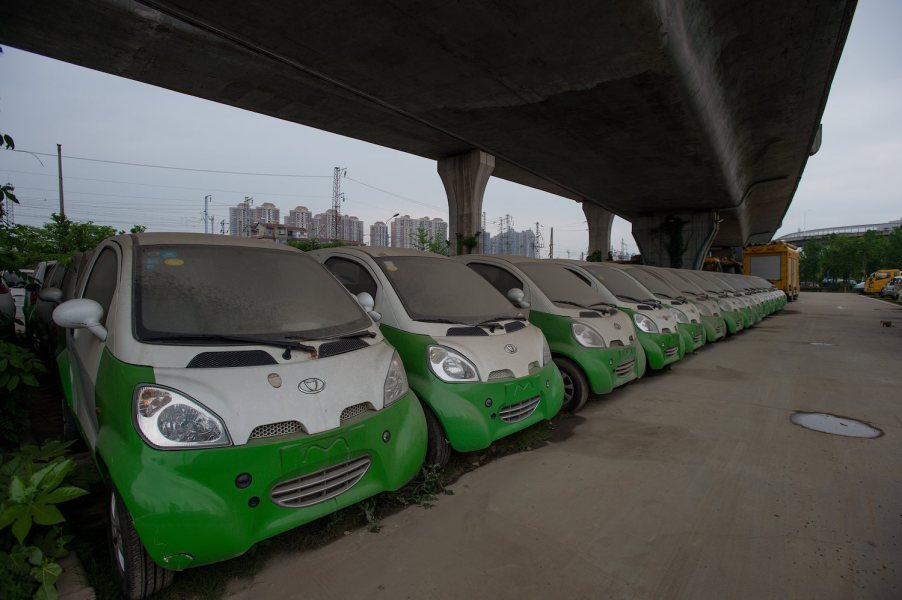
Did EV Makers Dupe Early Adopters?
You know him as Mr. Bean, but did you know that British actor Rowan Atkinson is a car nut and an early EV adopter? In a recent op-ed, the comedian (who once trained as an engineer) reveals how the auto industry “duped” him into going electric and why he recommends his friends hang on to their old internal combustion cars.
Atkinson’s concerns are purely environmental

Rowan Atkinson is the actor behind such roles as Mr. Bean and Johnny English. He is also an automotive enthusiast, has appeared on Top Gear, is an amateur racer, and even earned a truck driving license. His car collection has included an Acura NSK, vintage Aston Martins, and a McLaren F1.
Atkinson is concerned for the environment. And he earned both an undergraduate electrical engineering and masters degree in control systems engineering. So it tracks that he was an early EV adopter, buying a hybrid 18 years ago and a fully electric car nine years ago. But in June 2023, he wrote in The Guardian that he feels “duped” by the ubiquitous claims that EVs are more environmentally friendly.
In his argument, he does not bring up range anxiety or the high MSRP of EVs (40% more than a comparable combustion car). And why should he? He’s a celebrity with an extensive collection. But he mentions that driving an EV is no longer “cheap,” thanks to rising electricity prices.
Atkinson focused on a recent Volvo figure claiming that building an electric car emits 70% more greenhouse gases than making an internal combustion one. And building a traditional car isn’t great for the environment to begin with. Atkinson argues that the best thing we can do for the earth is hang on to our old cars longer.
The ex-engineer is intrigued by alternative combustion technologies

Lithium-ion batteries are heavy, expensive to manufacture, and wear out quicker than most other components of an EV. Mining lithium destroys the environment and violates human rights. Worse yet, the CEO of Stellantis worries the Earth contains insufficient lithium to replace every old car with an EV. Atkinson would urge most of us to wait for a better technology.
Every automaker, and many independent companies, are pursuing alternate battery chemistries. Atkinson feels solid-state batteries are promising but a long way off.
Despite being an electrical engineer by training, Atkinson is looking to alternate combustion technologies—namely, Porsche’s synthetic fuel, hydrogen fuel cells generating electricity, and hydrogen-powered combustion engines. But not everyone sees a future in this technology.
The Washington Post‘s “Climate Coach,” Michael J. Coren, dismissed “Mr. Bean” in a rebuttal article. Coren points out that the fuel for Hydrogen-powered combustion currently costs $16 a gallon. That is the cost of producing a tiny amount in a laboratory; mass production would reduce the cost. And Coren admits this but cites Edmunds saying, “We’ve gone too far down the EV road to change course.”
Atkinson might ask who duped us into driving this far down the EV road without exploring our options. After some rebuttals, he said, “My primary aim was to encourage debate … The fact that you’re having your discussion at all is great news to me.”
Is our ‘Honeymoon’ with the electric car over?

Many motorheads have been watching in awe as vehicles such as the Rivian truck and Rimac supercar smash records. Automakers struggle to keep up with demand for mass-produced EVs such as Teslas or the Ford F-150 Lightning. But the shine may finally be wearing off.
Atkinson said, “Our honeymoon with electric cars is coming to an end, and that’s no bad thing: we’re realising that a wider range of options needs to be explored if we’re going to properly address the very serious environmental problems that our use of the motor car has created.”
His argument that we keep our cars longer–whatever their propulsion system–has real environmental advantages. The new Federal tax credit for buying a used EV is one major step in the right direction.
But what propulsion system should new cars have? I’ve long argued that with the current limitations of battery technology, packs just small enough to cover the average day of driving (20 miles) make the most environmental and fiscal sense. Our cars could make up the difference with an internal combustion backup powertrain (a plug-in hybrid EV) or a gasoline-powered generator (a range-extended EV).
Requiring every new vehicle to have 20 miles of emissions-free range today would do more for the environment than a combustion ban that goes into effect a decade down the road. Why is no one else suggesting this? Because a policy that goes into effect in two political terms is a safe move. And in the meantime, automakers can make a lot more selling full EVs to a few wealthy people than PHEVs to all of us.
I’m not agreeing that we got duped. But the products with the highest profit margins receive the most marketing. Even if they’re not the best for the environment–or their owners.
Atkinson appears to agree. His car is a BMW i3, one of the only EVs available with a lightweight lithium-ion battery pack and internal combustion range extender.
Learn more about alternatives to the combustion ban or learn more about the problems with the lithium-ion batteries in current EVs in the video below:



